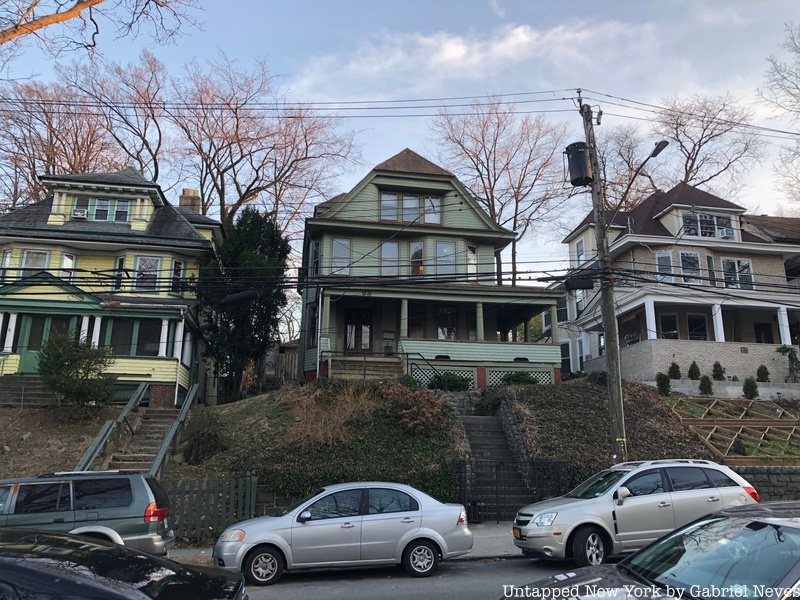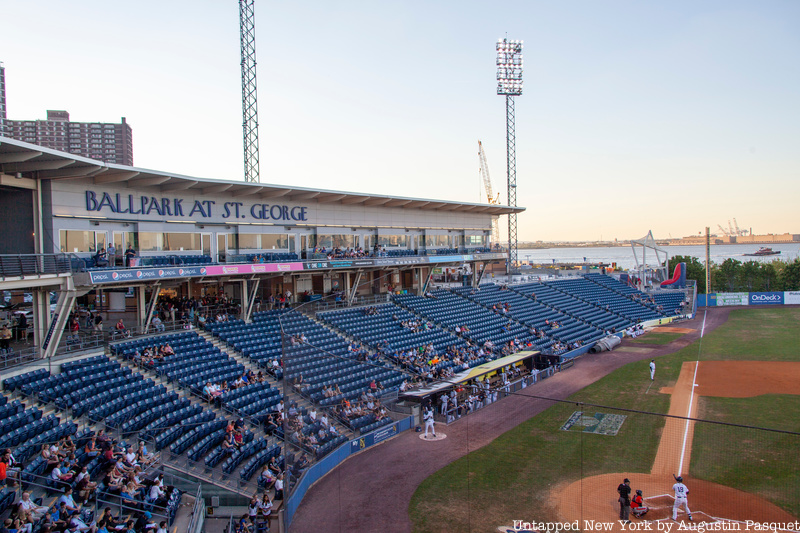7. Houses in St. George feature a wide range of architectural styles

Plenty of the homes around Curtis High School and in the Fort Hill section of the neighborhood used to be summer-getaway destinations for wealthy Americans in the early 19th century. Daniel D. Tompkins, Anson Phelps Stokes, a wealthy merchant and philanthropist, and Belmont Stakes founder August Belmont owned much of the land and had their families and friends living in the surrounding area as well. The majority of the houses that still remain were constructed in the 1880s and ’90s and add a distinct quality to the neighborhood.
The streets were laid out on hills, which meant construction had to be done in a manner that would require steps leading down from each porch onto the sidewalk and road below. A lot of the homes feature Victorian and shingle-style architecture, while there are two remaining Greek-revival homes closer to the waterfront portion of St. George. Tudor and Colonial Revival houses are also located in the St. George Historic District, which was officially designated by the city in 1994. Art Deco is another style on display at the Ambassador Arms apartment building on Daniel Low Terrace. The building was a temporary home for actors Paul Newman and Martin Sheen and stands out from most other buildings in the area with its gold and blue terra cotta trim.
8. Richmond County Bank Ballpark was built over a former rail yard

The 7,171 seat baseball stadium is located to the west of the shopping center near the St. George terminal and was the home of the Staten Island Yankees. The minor league team had been playing their home games at the park since 2001, but stopped in 2020 when the New York Yankees decided to disband the team. The stadium is currently undergoing a $5 million renovation to install new turf and reshape the field so that it can accommodate games for local rugby and soccer teams.
The site of the stadium itself used to be a rail yard utilized by the Baltimore & Ohio Railroad in the 1880s. The St. George Yard was where most of the freight transported across the island would be loaded onto ships to be carried out of New York Harbor. It remained as such until the St. George terminal fire of 1946 forced significant changes onto the surrounding facilities. The terminal’s renovation gave the Department of Transportation the opportunity to introduce a park-and-ride option to commuters looking for a more accessible way to go to work in the city without having to rely completely on public transportation. Thus, the city decided to build the parking lot over a part of the railyard, which was followed by Richmond County Bank Ballpark some decades later.





